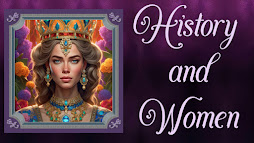17th Century
Elizabeth Murray, Lady Tollemache, Duchess Lauderdale
 |
| Elizabeth Murray, Duchess Lauderdale 1628-1698 |
Whilst searching for a strong female protagonist from the 17th Century on whom to base my novel, I discovered one practically on my own doorstep. I lived literally round the corner to Ham House, a stunning red brick Jacobean mansion on the River Thames, the home of Elizabeth Murray, Lady Dysart and Duchess of Lauderdale. Her second husband, John Maitland, Duke of Lauderdale, was one of the infamous CABAL of King Charles II, and between them, this couple turned Ham House into a palace fit for their king.
Bishop Burnet, described by Elizabeth’s biographer, Doreen Cripps as ‘that spiteful old busybody’, left a sketch of her character coloured with his prejudice and personal malice.
She was a woman of great beauty, but of far greater parts. She had a wonderful quickness of apprehension, and an amazing vivacity in conversation. She had studied not only divinity and history, but mathematics and philosophy. She was violent in every thing she set about, a violent friend, but a much more violent enemy. She had a restless ambition, lived at a vast expense, and was ravenously covetous; and would have stuck at nothing by which she might compass her ends. She had blemishes of another kind, which she seemed to despise, and to take little care of the decencies of her sex.
Catherine Murray took seventeen-year-old Elizabeth and her three younger sisters to the exiled Court at Oxford during the winter of 1643/1644, where Charles I had fled after the Battle of Edgehill, where Elizabeth saw firsthand how difficult life had become for many followers of the king.
Elizabeth’s father, William Murray, Earl Dysart, was arrested for spying for the Royalist cause, acquitted after months in the Tower of London, but banished to Queen Henrietta Maria’s court outside Paris. Despite his dangerous disgrace, Elizabeth’s formidable mother, Catherine Bruce Murray, invited Cromwell to dine at Ham House when King Charles I was under house arrest at Hampton Court, a mere five miles downriver.
Elizabeth apparently charmed Oliver Cromwell with her wit and intelligence, and they remained in contact, even though during King Charles II’s exile in the 1650’s, Elizabeth was reputedly a member of The Sealed Knot carrying money and information to the exiled king.
Bishop Burnet, described by Elizabeth’s biographer, Doreen Cripps as ‘that spiteful old busybody’, left a sketch of her character coloured with his prejudice and personal malice.
She was a woman of great beauty, but of far greater parts. She had a wonderful quickness of apprehension, and an amazing vivacity in conversation. She had studied not only divinity and history, but mathematics and philosophy. She was violent in every thing she set about, a violent friend, but a much more violent enemy. She had a restless ambition, lived at a vast expense, and was ravenously covetous; and would have stuck at nothing by which she might compass her ends. She had blemishes of another kind, which she seemed to despise, and to take little care of the decencies of her sex.
 |
| Catherine Bruce Murray |
Elizabeth’s father, William Murray, Earl Dysart, was arrested for spying for the Royalist cause, acquitted after months in the Tower of London, but banished to Queen Henrietta Maria’s court outside Paris. Despite his dangerous disgrace, Elizabeth’s formidable mother, Catherine Bruce Murray, invited Cromwell to dine at Ham House when King Charles I was under house arrest at Hampton Court, a mere five miles downriver.
Elizabeth apparently charmed Oliver Cromwell with her wit and intelligence, and they remained in contact, even though during King Charles II’s exile in the 1650’s, Elizabeth was reputedly a member of The Sealed Knot carrying money and information to the exiled king.
 |
| Duke of Lauderdale |
That meeting between the Royalist girl and the Colonel in Chief of the Roundhead army must have been a difficult one, for several attempts had been made by them to seize Ham House and the family's estate, threatening to leave them all homeless. There is no evidence that Elizabeth or her family were involved in the plan to help Charles I escape Hampton Court, but escape he did, and some of their friends were involved, including the Earl of Lauderdale, and yet no Murrays were arrested.
It was a tribute to Elizabeth's diplomacy, that when she pleaded with Cromwell for the life of John Maitland, Earl Lauderdale, captured after his participation in the Battle of Worcester in 1651, it surprised many when his sentence of death was commuted to imprisonment.
Elizabeth married Sir Lionel Tollemache 2nd Bart in 1648, a non-political Suffolk landowner who attracted neither Royalist or Parliamentary attention. The marriage was a successful one, and secured Ham House for Elizabeth, who bore him eleven children in twenty-two years, five of whom lived to adulthood. Lionel died in 1669.
Lady Anne Lauderdale fled to Paris in 1671, apparently to distance herself from the burgeoning friendship between her husband and Elizabeth. Six weeks after Lady Anne's death the following year, London society was outraged when, John Maitland, Earl of Lauderdale and Lady Elizabeth Tollemache were married.
It wasn’t until her forties, when Elizabeth’s political manoeuvrings as Duchess Lauderdale were frowned upon, that she was rumoured to have been not only Earl Lauderdale's mistress when they were both married to other people, but also Oliver Cromwell's, and she was suspected of spying for both sides during the Interregnum:
She is Besse of my heart, she was Besse of old Noll;
She was once Fleetwood’s Besse, now she’s Bess of Atholle;
She’s Besse of the Church, and Besse of the State,
She plots with her tail, and her lord with his pate.
With a head on one side, and a hand lifted hie,
She kills us with frowning and makes us to die.
She was once Fleetwood’s Besse, now she’s Bess of Atholle;
She’s Besse of the Church, and Besse of the State,
She plots with her tail, and her lord with his pate.
With a head on one side, and a hand lifted hie,
She kills us with frowning and makes us to die.
‘Royalist Rebel’, by Anita Seymour, a biographical novel of Elizabeth’s youth will be released in paperback by Pen and Sword books in early 2013.
 |
| From History and Women |


















Post a Comment
4 Comments